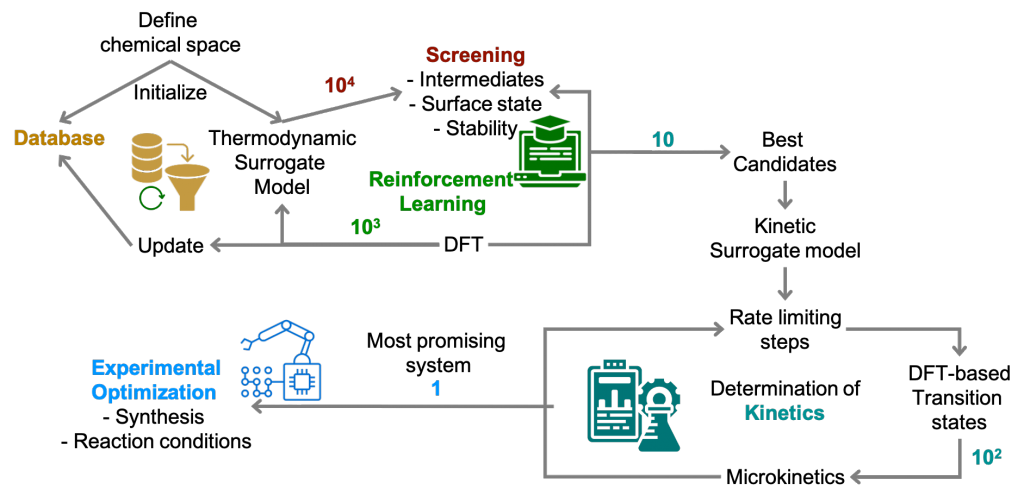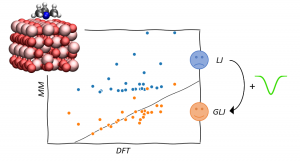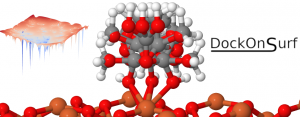
After quite some effort, the perspective on hight-throughput computations is finally online. Working with Zhi Wei Seh is always productive and Mohammed did a good job summarising the literature!

After quite some effort, the perspective on hight-throughput computations is finally online. Working with Zhi Wei Seh is always productive and Mohammed did a good job summarising the literature!
Our first article of 2022 is now available in Current Opinion in Electrochemistry: We discuss the atomistic modelling of the identification of (potential-dependent) activation energies in electrocatalysis. Nawras did a great job!
TOC_eTSAfter some battling, we are very happy to present our work on interfacial force fields, now published in J. Phys. Chem. B: for near-chemisorption, as observed for Lewis-acid/Lewis-base interactions on metal oxides, the “standard” Lennard-Jones interactions should be supplemented with an attractive, anisotropic Gaussian attractive term in order to retrieve qualitatively correct results.

After some tedious work on a somewhat ill-defined problem, we are happy to announce the publication of our manuscript on the stability of 2H-MoS2 edges during the electrocatalytic hydrogen evolution reaction in acidic media in J. Chem. Phys. C. The main issue is how to determine the stability of a sulfided edge in the absence of a well-defined sulfur chemical potential? – Indeed, in contrast to typical catalytic applications of MoS2, there is simply no sulfur reservoir under HER and, thus, each S that is released in the form of H2S is irreversibly lost. Our investigation concludes that the Mo-edge is likely to exchange its surface sulfur by surface OH*. These sites remain active for HER. The S-edge, on the other hand, is expected to be more stable, but once it starts loosing its S atoms, the HER activity will drop, leading to deactivation phenomena.
TOC_exWe are very proud to announce that our paper describing the DockOnSurf package is now published in Journal of Chemical Information and Modeling.
The code is available on gitlab! And you can find its documentation on readthedocs.
If you have molecules to adsorb on a surface, this package is for you! – At least if you are using VASP or CP2K.

Our very collaborative work on using generalized coordination numbers for understanding and designing active sites for alcohol dehydrogenation reactions has finally been published in J. Phys. Chem. C.
The comment I co-authored with Zhi Wei Seh from A*STAR in Nature Reviews Materials is now online! – We highlight the challenges and necessities for a better characterization and understanding of electrified interfaces. This is an important step towards a more rational design of electrocatalysts.
NatRevMatterIt took some time – but we finally present the full comparison adsorption of various functional groups on hematite and alumina as a result of our collaboration with Total.
Finally, the mathematical article of Ruben Staub is published! – If you are interested in this work, check out the GitHub page as well.
We have published our last paper on carbon nitrides (here melon, g-C6N9H3) in PCCP. It nicely finishes our series on these materials.